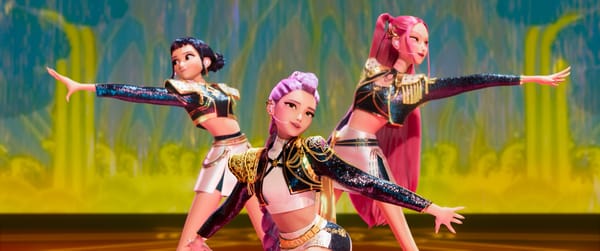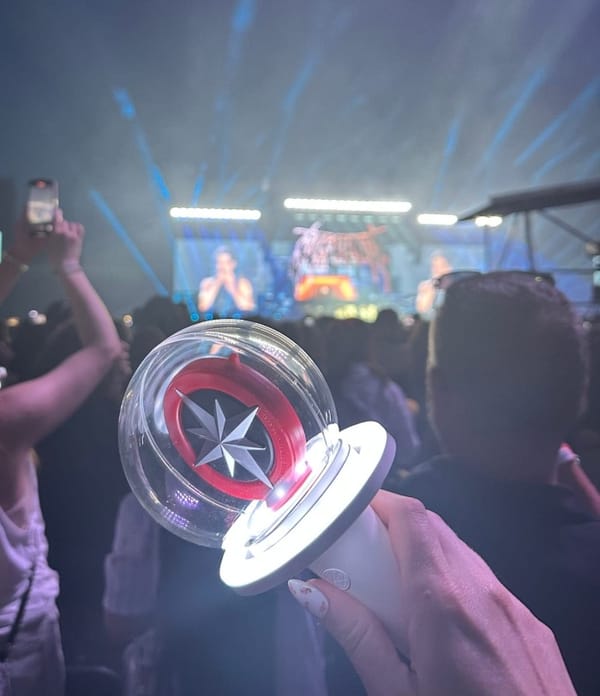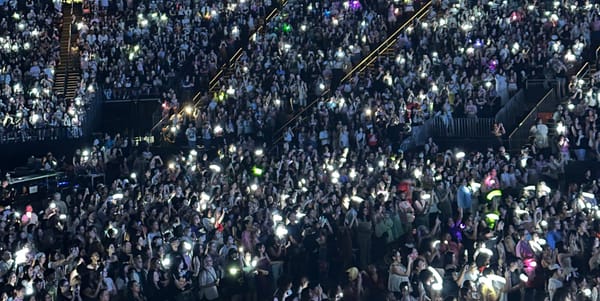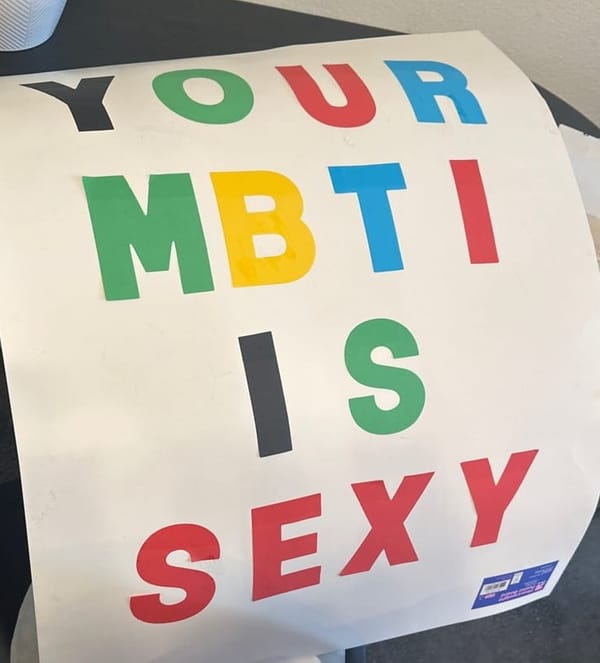The communality of K-pop lightsticks
Some thoughts on the value of "the biggest waste of plastic in the world"
Tonight, Blackpink will be in the Tri-State area for their first concert in the area since 2019, bringing their Born Pink tour to the Prudential Center in New Jersey.
I will also be at the Prudential Center, covering the event.
And I will be there with a plastic pink hammer, one of the quartet’s signature lightsticks. It’s one of over a dozen that I own, both second-generation stick-like lightsticks, and newer, more complexly designed bluetooth-able 3D ones.
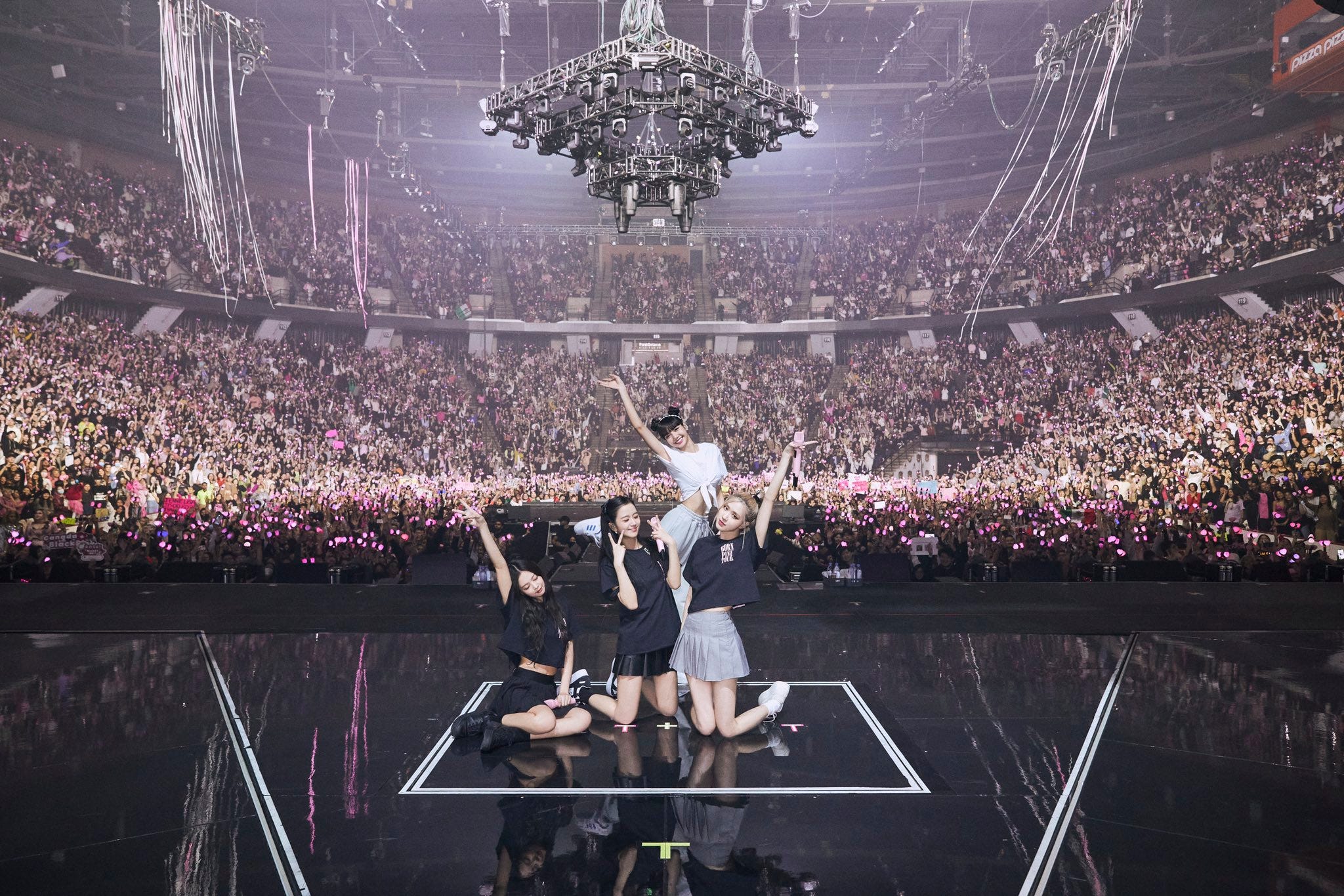
A source once described K-pop lightsticks to me as “the biggest waste of plastic in the world” for a piece I wrote on the environmental concerns surrounding K-pop merchandise, and I cannot get that thought out of my mind.
While there’s a lot to be said about the environmental footprint of K-pop merchandise and how we all (but especially entertainment companies) could be better about doing our part to reduce our carbon footprint, and I am personally trying to be better about buying less, I cannot break away from spending money on these plastic, sometimes one-time use, items, as hypocritical as it is.
There’s such a sense of connectivity from being part of an audience, cheering on for the same thing, that even while I’m aware I’ve fallen prey to great marketing and consumerism, I cannot pass up the chance to feel part of a whole, wholly invested in this moment, in this connective show of support for the artist we’re watching.
If you’ve ever been a K-pop concert, especially an arena or stadium one, or if you’ve just seen a picture, you likely know what I’m talking about regarding the feelings of it all. It’s intense at times, to be part of the wave of color-changing hues, full of passion. On occasions when I do not have lightsticks I admit to feeling wholly separated, like an observer rather than a participant. As a journalist, it’s arguably better that way, but as a human, I hate it.
There’s a lot to be said about the psyche of spectators at live events, and I think a good comparison for lightsticks are jersey-wearing sports fans, in that owning one of these items expresses a sense of joint identity while simultaneously showing your investment (literally) into the object of your love, whether it’s a K-pop group or an athletic team.
At tonight’s show, there’ll likely only be Blackpink’s Bl-ping-bongs, but if you go to a multi-artist concert or festival, that sense of finding your tribe, something so innate to the human group identity, is almost overwhelming. “They are like me, they see the same thing I do in the people, the band, the artist, I do. We are like minded. We love the same thing and, at least in this ownership of a single item, the same way.”
Humans are biologically coded to seek connections, and these sizable chunks of light-up plastic, at least to me, are an ultimate show of that.
Lightsticks are, on the business side of things, also immensely lucrative: the Prudential Center, a popular venue in the NY area for K-pop concerts, can seat up to over 19,000 people. If even half of them in attendance have paid for a lightstick (priced anywhere from $40-100 depending on where you buy it), that’s hundreds of thousands of dollars of additional revenue for a touring artist beyond their ticketing costs. Ideally, moving forward, I’d love to see an environmentally-alternative to be able to feel connected to an audience, but unless someone can figure out a way to create paper-based bluetooth lights, doubt that’s on the horizon.
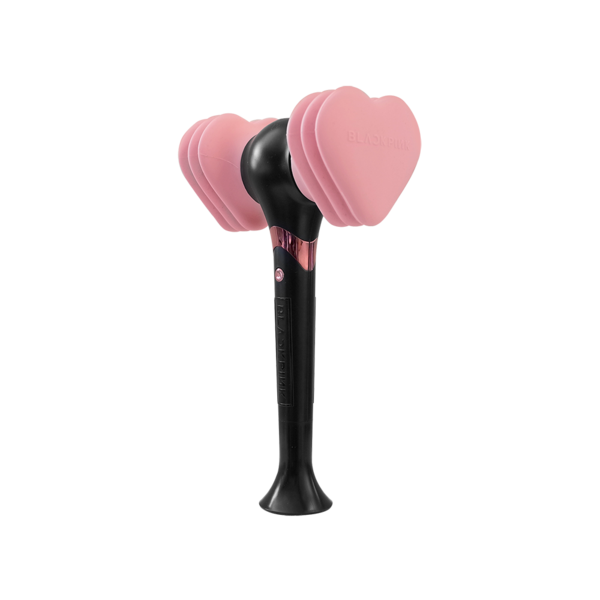
K-pop fans are often simultaneously praised and vilified for their communities’ activities, but most meetings of fans take place online, where it’s hard to truly get a sense of the connection between one fan and another when everyone’s behind a screen. But at concerts, there’s a sense of togetherness, and these beautifully-designed lightsticks, these overpriced, over-plasticized, become a show of the feelings in the hearts and minds of fans.
They may only be raised and waved at one single concert event, but the feelings K-pop lightsticks represent are powerful and meaningful to fans. As an object, they reflect a tangible, visible show of their love for the artist and their music, and, when in use, are a banner of connectivity between the people bearing them.
Beyond their glorious aesthetic designs, on a symbolic level they’re beautiful shows of communality that are, at least to me, hard to give up, especially in a world where we witnessed a recent period where getting together to show an outpouring of passion for the artists and art we love was impossible.
Music is one of the most ephemeral art forms, the most changeable depending on each listener’s experience in any given moment of hearing. But these plastic, sizable items are visual, physical representations of what that art evokes in each one of us that creates a concert crowd.
This second edition of Notes on K-pop is essentially a long way to explain away why my mixed feelings of buying lightsticks, but I think that in this dark world, a bit of light is allowed.
If you have thoughts, please comment, like, and/or join the Notes on K-pop chat, now available in the Substack app!
CALL TO CONNECT
A very talented friend of mine suggested that I incorporate a second mini edition each week to this newsletter, so I’m thinking of doing Five Question Friday’s with K-pop and K-pop adjacent artists, industry insiders, and creatives.
It’s not going to be a weekly thing for a while, but still like the idea, so if you’re a PR person who thinks that sounds interesting that would like to connect and discuss, the email is tamarhermanwrites@gmail.com.
Thank you, L, for the name and suggestion!
Question for the crowd: I know newsletters aren’t necessarily the true route™️ to financial success, but for a while now I’ve been contemplating doing a rewrite or edit series of some of my earliest (or not so early) interviews with K-pop stars, where I’d go back to stories and rewrite them or leave notes to myself the way I’d leave for someone I’d edit nowadays, plus add some insight into the interviews themselves. If I made that my paid-tier, would you be interested in a once a month piece like that?
Some recent work:
Pop Pantheon to discuss BTS’s legacy - I have to apologize to the team at Pop Pantheon, because the episode aired on my birthday, when I decided not to do any work, and in the middle of the Jewish autumnal holiday season, so it slipped my mind to share earlier. But I really enjoyed listening to this ep, and enjoy the podcast in general, so please take a listen.
What I’m reading:
Everything I Need I Get From You: How Fangirls Created the Internet as We Know It by Kaitlyn Tiffany
What I’m listening to:
Chen’s Last Scene and bobae’s King of Comedy EPs kept me company while I wrote this draft. I noticed bobae and a few other artists I wouldn’t typically call “K-pop” were highlighted on Apple Music’s K-pop playlist last week, but that’s a conversation for another edition.
Steal this pitch:
I’m desperate to read (or write if you’re a reader who would like to hire me) a piece on the Kahi serum balm that was in every K-drama and now is in every non-K-pop music video out there.
